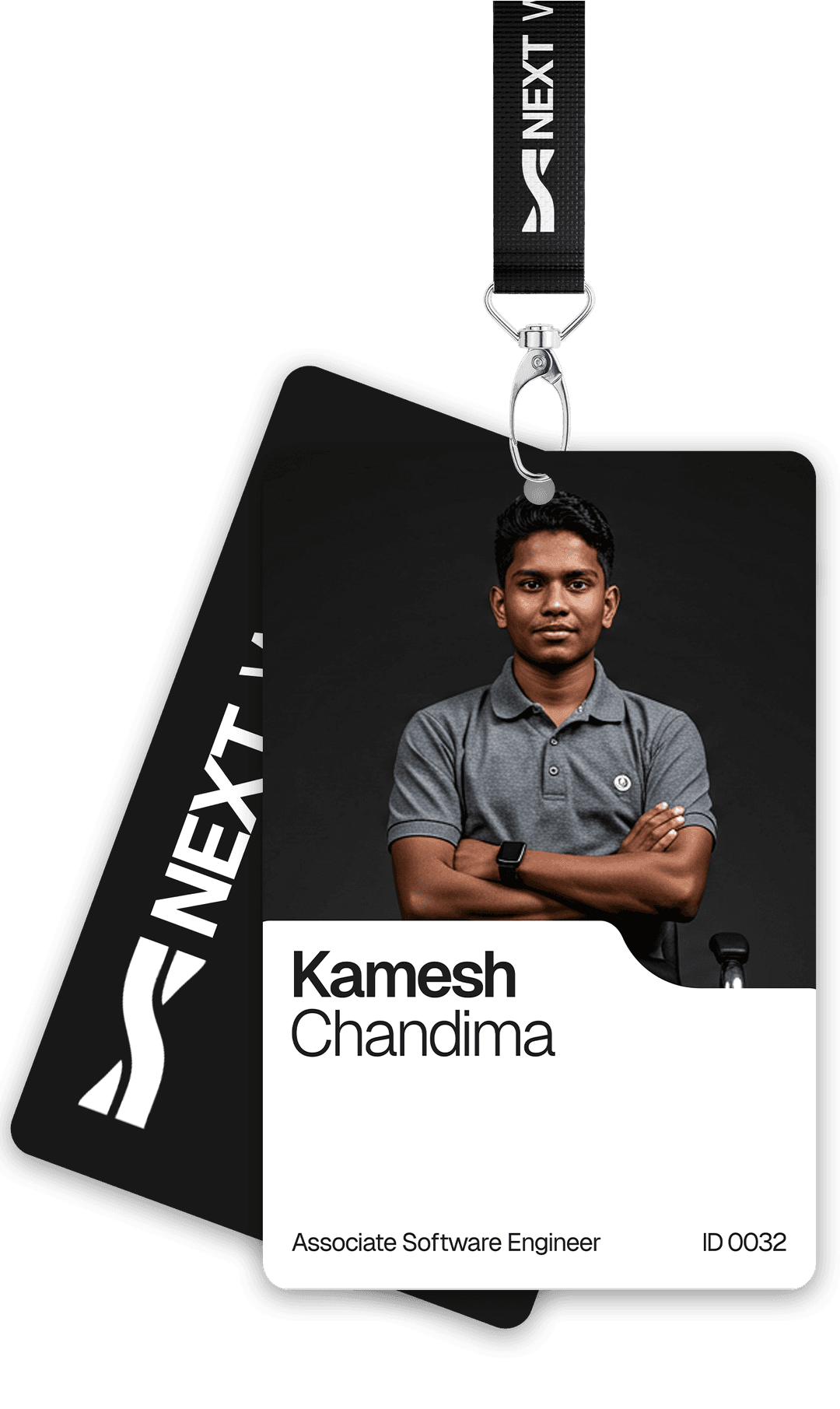🔖 Introduction
About the project
Short overview of the project including the topic, the industry and the goals. Explain what you did, why you did it, and what were the results. Keep this introduction brief.
[Describe the image: 'Calendar view of the [name] app']
🤔 Problem space
Problems to solve/Requirements to Create
[Top level overview of Clients' Problems or Requirements. 2-3 lines. If it's your project, hypothetically imagine a potential client.
👉 [Problem/Requirement] Example: Users cannot sort their time entries by date
[Write an extended problem statement]
Current solution
[Describe how users are currently solving this problem. How it is solved in the product]
[📸 Describe what's on the screenshot]
[📸 Describe what's on the screenshot]
How do we know it is a problem
👉 [Problem]
[Write an extended problem statement]
[Write an extended problem statement]
Current solution
[Describe how users are currently solving this problem. How it is solved in the product]
[📸 Describe what's on the screenshot]
How do we know it is a problem
📣NOTE: Feel Free to Add Enough Problems/Requirements by using the same structure
Why solve these problems? (Highly Optional)
[Summarize why it is important to address these problems, and why it should be done now.]
[User satisfaction matrix]
💡 User satisfaction matrix shows where is given solution is regarding user satisfaction and importance of a user need, vs. where you want it to be after this project is implemented.
Goals
Company objective 🎯
💡 Quote the company objective that your project will help achieve. For example: To Create an Modern E-Commerce Platform and Admin dashboard to manage sales
[Main company objective you're contributing to with this project]
Project goals
💡 List goals you and your team established for this project. You can briefly explain how they connect with the high-level company objective.
User Stories
�� List types of user's needs that you are going to fulfill through the project
[User type] Example: Visitor 1
[Write a short description of this user. Ex: The Visitor 1 is viewing the website to find different types of clothes that are displayed]
[User type] Example: Admin
[Write a short description of this user]
Goals:…
Needs:…
Other characteristic:…
🌟 Design space
UI Design
[Describe the UI Design and flow]
Low-fidelity Wireframe
💡 Start showing the progress of your design. Share key concepts, sketches, and low-fidelity mockups. Select only key screens to not overwhelm the viewers. Use digital sketches (examples below were created in excalidraw Excalidraw).
[Design concept]
[Describe your concept]
[✍️ Title of your sketch]
High-fidelity design
💡 Share high-fidelity mockups for key flows. You can also attach the prototype or a video walkthrough.
[✍️ Title of your image]
Design system 🎨
💡 If you've created or used a design system for this project like ShadCN or Custom Design System, you can add it here
[Describe why you needed to use a design system and how you utilized it to develop.]
Development Phase
Technology Stack Selection
💡 Discuss why the Technologies and Tools you used are chosen
[EXAMPLE] 1. Frontend - React.js with TanStack Query
Why React.js?
Component-Based Architecture: Enables reusable UI components, making the frontend modular and maintainable.
Efficient UI Updates: Uses a virtual DOM for faster rendering and smooth user interactions.
Rich Ecosystem: Vast library support and active community ensure continued improvements.
Why TanStack Query for Data Fetching?
Automatic Data Synchronization: Keeps inventory data fresh without excessive API calls.
Background Fetching & Caching: Minimizes unnecessary requests by caching data and refetching only when needed.
Optimistic Updates: Ensures real-time responsiveness by updating UI before the server confirms changes.
Error Handling & Retry Logic: Manages network issues gracefully without breaking the user experience.
High-Level Architecture Diagram
💡 Include any High-Level Architecture Diagram and Describe about it
[Add the Architecture Diagram Description Here… Ex: Built a serverless microservices-based system with an API Gateway managing access to different functions and services]
Entity-Extended Relationship Diagram or Class Diagram or Any other Detailed Diagrams
[Add the Architecture Diagram Description Here… Ex: Built a serverless microservices-based system with an API Gateway managing access to different functions and services]
Key Features of the Software
💡 List down the Key Features you implemented in the Software
[Feature 1—Ex: Inventory Management]
[Description and the Decisions made in the development here.]
EXAMPLE:
1. Database Selection & Schema Design (MongoDB)
Decision: Chose MongoDB as the database for its flexibility in handling dynamic inventory data (e.g., varying product attributes, stock levels, categories).
Implementation:
Designed a schema with embedded documents where possible (e.g., storing stock details within product documents to reduce query complexity).
Used indexes on frequently searched fields (e.g., productName, category, SKU). ]
Challenges Faced and Solutions
💡 Write down the challenges you faced and how you solved
[EXAMPLE] Problem:
In our inventory management system, multiple users were updating stock levels simultaneously, causing race conditions and inconsistent data. Additionally, frequent database writes from high-traffic transactions led to performance bottlenecks.
[EXAMPLE] Solution:
We implemented Optimistic Concurrency Control (OCC) and WebSockets (Socket.io) to handle real-time updates efficiently:
Versioning in MongoDB: Used a version field to track changes and prevent race conditions. Updates were applied only if the stored version matched the client's version.
WebSocket Notifications: Instead of repeatedly polling the database, we pushed live updates to clients using WebSockets.
Redis Caching for Stock Reads: Frequently accessed stock data was cached in Redis, reducing unnecessary database queries.
testtesttesttesttest



Get visibility from recruiters & peers
Build your portfolio & personal brand
Connect with like-minded developers
